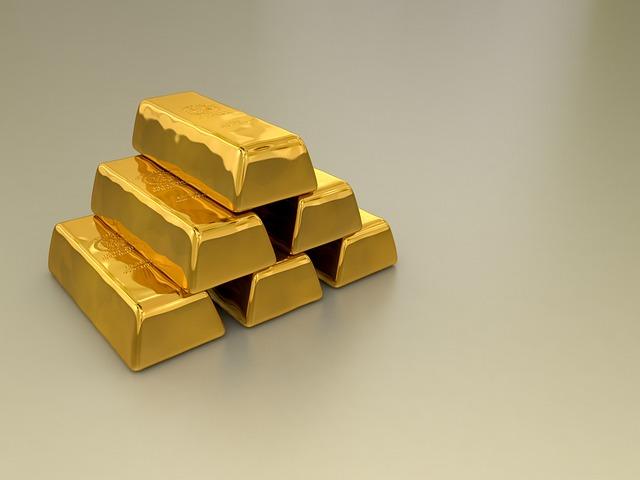In an era marked by economic uncertainty and volatile financial markets, the strategic preservation of family wealth has become a paramount concern for many households. As traditional investment vehicles grapple with unpredictability, precious metals have emerged as a steadfast cornerstone in the architecture of wealth preservation. Historically revered for their intrinsic value and stability, metals such as gold, silver, and platinum offer a tangible and resilient asset class that can hedge against inflation, currency devaluation, and geopolitical upheavals. This article delves into the multifaceted role of precious metals in safeguarding family wealth, analyzing their performance over time, exploring their integration into diversified portfolios, and elucidating the benefits they confer in ensuring financial security across generations. With a confident lens, we will examine how these timeless assets continue to serve as a bulwark against the erosive forces that threaten to diminish family legacies.
Understanding Precious Metals as a Stable Investment for Families
Investing in precious metals offers a stable and reliable avenue for families seeking to preserve wealth across generations. These tangible assets have consistently demonstrated their ability to retain value, even in the face of economic volatility. Unlike stocks or real estate, which can be susceptible to market fluctuations and external economic factors, precious metals such as gold, silver, and platinum provide a hedge against inflation and currency devaluation. This makes them an attractive option for families who prioritize long-term financial security.
Families looking to diversify their investment portfolio can benefit from the unique characteristics of precious metals. Some key advantages include:
- Liquidity: Precious metals can be easily bought and sold, providing flexibility when financial needs arise.
- Intrinsic Value: Unlike fiat currency, precious metals have inherent worth that is not subject to government policies.
- Historical Resilience: Throughout history, these metals have maintained their value, proving to be a reliable store of wealth.
By incorporating precious metals into their investment strategy, families can safeguard their financial future against the unpredictability of global markets.
Analyzing Market Trends: The Resilience of Gold and Silver
In the dynamic landscape of financial markets, precious metals like gold and silver have consistently demonstrated their resilience. Historically, these metals have served as a hedge against inflation and economic downturns, providing a stable store of value even when other assets falter. Their enduring appeal is rooted in their intrinsic value, which is not susceptible to the same risks as paper currencies or digital assets. This makes them a reliable component of a diversified investment portfolio, particularly for those looking to preserve family wealth across generations.
- Intrinsic Value: Unlike fiat currencies, gold and silver possess inherent value that is recognized worldwide.
- Inflation Hedge: Precious metals often appreciate when inflation erodes the purchasing power of paper money.
- Market Liquidity: Both gold and silver are highly liquid assets, easily converted into cash or other forms of wealth.
- Long-term Stability: Over the centuries, these metals have maintained their status as a symbol of wealth and security.
By understanding the unique characteristics of gold and silver, families can better navigate economic uncertainties. Their consistent demand across various industries, from jewelry to electronics, further underscores their economic significance. In a world where financial instruments are increasingly complex, the tangible nature of precious metals offers a sense of security and permanence.

Strategic Allocation: Balancing Precious Metals in Family Portfolios
Incorporating precious metals into a family’s investment strategy requires a thoughtful approach to ensure both security and growth. The key lies in strategic allocation, which involves determining the right balance of metals like gold, silver, platinum, and palladium in the portfolio. This balance is influenced by various factors such as market conditions, the family’s risk tolerance, and long-term financial goals. Precious metals often serve as a hedge against inflation and economic uncertainty, making them a valuable component of wealth preservation strategies. However, it’s crucial to assess the volatility and liquidity of these assets to avoid overexposure.
To achieve an optimal allocation, families should consider:
- Diversification: Spread investments across different metals to mitigate risks associated with market fluctuations.
- Regular Review: Periodically assess the portfolio to align with changing financial objectives and economic environments.
- Professional Guidance: Consult financial advisors who specialize in precious metals to tailor a strategy that suits the family’s unique needs.
By maintaining a well-balanced portfolio, families can leverage the stability of precious metals to safeguard their wealth for future generations.

Long-term Benefits: Securing Generational Wealth with Precious Metals
Investing in precious metals offers a strategic approach to safeguarding family wealth over generations. These tangible assets, such as gold and silver, have historically maintained their value, providing a hedge against inflation and economic instability. Unlike stocks or bonds, which can fluctuate wildly in uncertain times, precious metals offer a stability that can anchor a family’s financial foundation. This stability is particularly beneficial for long-term wealth preservation, ensuring that future generations inherit assets that are both valuable and secure.
- Inflation Protection: Precious metals have a proven track record of maintaining purchasing power over time, acting as a reliable store of value.
- Portfolio Diversification: Including metals in a family’s investment strategy can reduce risk, as they often move independently of traditional financial markets.
- Tangible Asset: As physical assets, precious metals are less susceptible to digital fraud or financial market manipulation, offering a level of security not found in other investments.
By integrating precious metals into their financial planning, families can create a legacy of wealth that is resilient to the shifting tides of global economies. This strategic allocation not only protects current assets but also empowers future generations with a robust financial toolkit.



